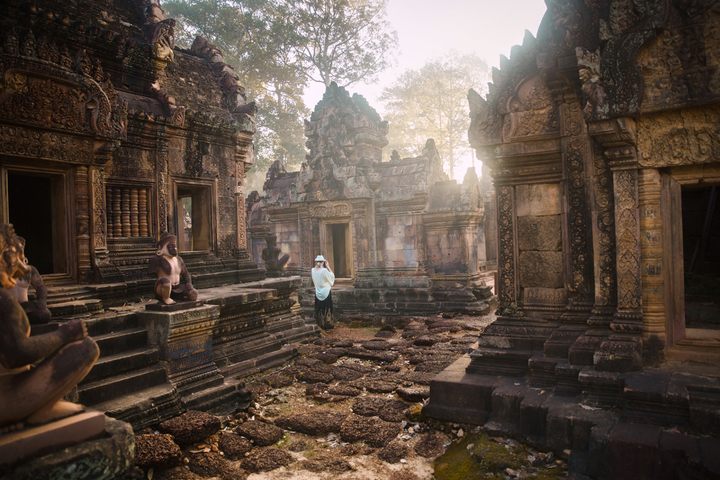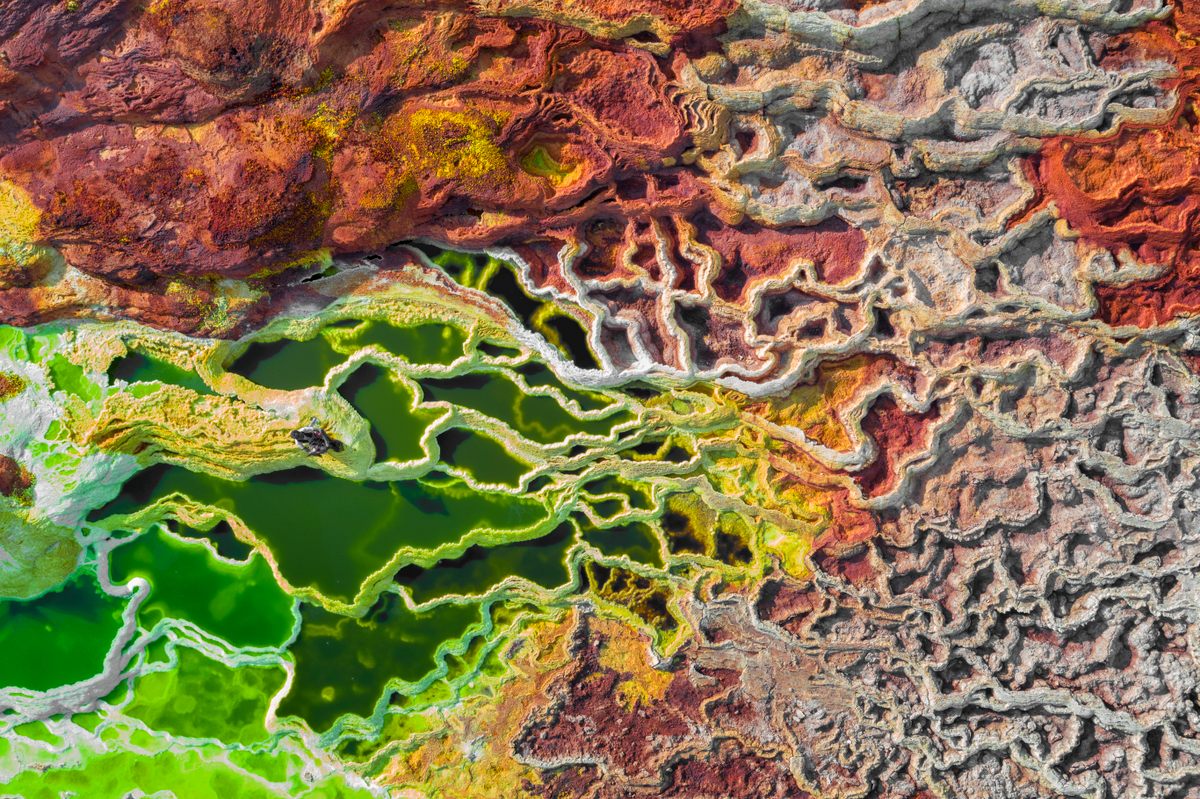
From Killer Clams to Roman Emperor-Detectives, Atlas Obscura’s Year in Books
Our excerpts are great reads and invitations to new worlds.
We love year-end lists of great reads, even if they occasionally inspire a little dread. Our tsundokus (that is, stacks of unread books) are already pretty precarious. At Atlas Obscura, we like to offer a little taste alongside our book recommendations—excerpts that both offer a great read and invite you to explore further.
Here are some of our favorite book excerpts of 2021, covering everything from giant killer clams to bizarrely colorful landscapes to books bound in human skin. And if you’re a voracious reader, you should check out Atlas Obscura’s Literati Book Club, Finding Wonder, a subscription box service that will send you a new book about wonder all over the world each month, tsundoku be damned.

Searching for the Limits of Life in Earth’s Most Extreme Environment
From Super Volcanoes: What They Reveal About Earth and the Worlds Beyond, by Robin George Andrews
Volcanologist and regular Atlas Obscura contributor Robin George Andrews takes readers around the world and into space to understand the most awe-inspiring volcanoes, from Yellowstone to Mars. In this excerpt, we visit Ethiopia’s Danakil Depression, where Africa is tearing itself apart and volcanic chemicals fuel ecosystems unlike anything else on the planet.
Can India Solve Its Macaque Conundrum With Contraception?
From Fuzz: When Nature Breaks the Law, by Mary Roach
Best-selling author Mary Roach is one of the funniest science writers out there, and always a great companion for a deep dive into the weirder sides of our world—including the spaces where animals and humans run afoul of one another. Here, she goes to India to examine the science of controlling marauding, sacred monkeys.
Seeking the Truth Behind Books Bound in Human Skin
From Dark Archives: A Librarian’s Investigation into the Science and History of Books Bound in Human Skin, by Megan Rosenbloom
Thankfully, this book isn’t itself bound in skin, but is an in-depth exploration of the myth, reality, and ethics of such curiosities from Megan Rosenbloom, a librarian who led a research project on the subject. She takes us to Philadelphia to meet a 19th-century widow and the “gentleman” doctor who treated her, before and after death.
Plants, Heavy Metals, and the Lingering Scars of World War I
From Islands of Abandonment: Nature Rebounding in the Post-Human Landscape, by Cal Flyn
La Place à Gaz in Verdun, France, is one of the most environmentally damaged places in the world, where a panoply of ammunition and chemicals used in World War I were piled, burned, and buried. It is one of the places that investigative journalist Cal Flyn visits in her exploration of how nature rebounds from our more acute insults.

Can You Be Addicted to Travel?
From Mad Travelers: A Tale of Wanderlust, Greed and the Quest to Reach the Ends of the Earth, by Dave Seminara
Writer and former diplomat Dave Seminara is well-traveled by any measure—except the measure that the most traveled people in the world use: racking up visits to every state, province, and remote island on the map. His book is about a con-artist who took advantage of this travel obsession, and in the course of it, Seminara explores whether that obsession can actually be an addiction.
The Tragic Life and Global Legacy of the Last Hawaiian Princess
From Women on Waves: A Cultural History of Surfing From Ancient Goddesses and Hawaiian Queens to Malibu Movie Stars and Millennial Champions, by Jim Kempton
It’s taken 200 years for surfing to get where it is today, and former editor in chief of SURFER magazine Jim Kempton argues that none of it would have been possible without the “brilliant, beautiful, and betrayed,’ Princess Ka‘iulani.
The History, Myth, and Future of the Giant Clam
From The Sound of the Sea: Seashells and the Fate of the Oceans, by Cynthia Barnett
In this lively, globe-spanning work of history, travel, and science, environmental journalist Cynthia Barnett manages to cover what seems like the whole of human endeavor—commerce, religion, science, art, cities, and more—through the hard parts of squishy mollusks all over the world. In this chapter we visit Palau, where despite traditional and modern protections, the massive mollusks are at risk.

Iceland’s Famed ‘Lunar Landscape’ Is Turning Purple
From How Iceland Changed the World: The Big History of a Small Island, by Egill Bjarnason
Reykjavík-based journalist Egill Bjarnason takes on the scope of how a tiny, sparsely populated island nation always seems to factor prominently in global events. Pretty Alaskan lupine is changing the look of the country, and feelings about it are strong.
How Early Megacities Emerged From the Jungles of Cambodia
From Four Lost Cities: A Secret History of the Urban Age, by Annalee Newitz
This book by journalist Annalee Newitz spans millennia and the world—Turkey, Italy, Cambodia, and the Mississippi River—to examine the roots of civilization, aided by cutting-edge research in archaeology. Here we journey to Angkor to see how a mix of environmental changes and political turmoil doomed its ancient settlements.
Tiberius, Imperial Detective
From A Fatal Thing Happened on the Way to the Forum: Murder in Ancient Rome, by Emma Southon
Remus, Caesar, Caligula, Claudius. Murder was all the rage in ancient Rome. Historian and podcast host Emma Southon is a lively guide to all manner of mayhem—in this case when an emperor was not a victim of murder, but interested in cracking a thorny case.










Follow us on Twitter to get the latest on the world's hidden wonders.
Like us on Facebook to get the latest on the world's hidden wonders.
Follow us on Twitter Like us on Facebook